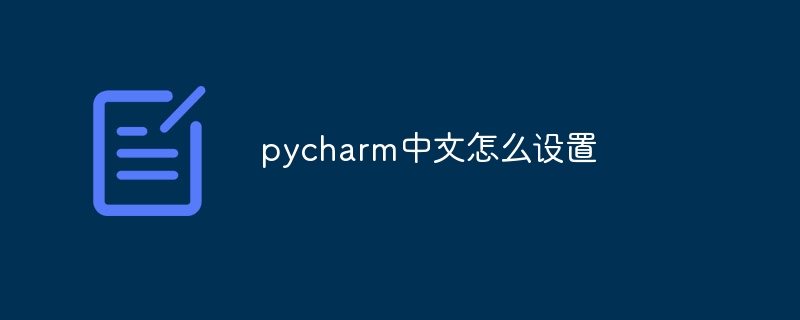Set up PyCharm Chinese interface through the following steps: Update PyCharm to the latest version. Install PyCharm Chinese language package. Restart PyCharm and enable the Chinese interface. Apply settings. Optionally, configure keyboard shortcuts to operate in English.

How to set up PyCharm Chinese interface
Step 1: Update PyCharm
- Make sure PyCharm is updated to the latest version.
Step 2: Install PyCharm Chinese language pack
- Open PyCharm, click the "File" menu, and select "Settings".
- Select "Plugins" in the left panel and click "Browse Repository".
- Search for "Chinese (Simplified)" language pack and click "Install".
Step 3: Enable Chinese interface
- After the installation is complete, restart PyCharm.
- Open "Settings" again and select "Appearance & Behavior" > "Appearance".
- Select "Chinese (Simplified)" under "UI Language".
Step 4: Apply Settings
- Click the "Apply" button.
- PyCharm will restart and display the Chinese interface.
Step 5 (optional): Configure keyboard shortcuts
Tip:
- If you cannot find the Chinese (Simplified) language pack, please check if you have subscribed to PyCharm Professional version. This language pack is only available to Pro users.
- If any problems occur after enabling the Chinese interface, please try reinstalling the language pack or contact the PyCharm support team.
The above is the detailed content of How to set up pycharm in Chinese. For more information, please follow other related articles on the PHP Chinese website!
Statement:The content of this article is voluntarily contributed by netizens, and the copyright belongs to the original author. This site does not assume corresponding legal responsibility. If you find any content suspected of plagiarism or infringement, please contact admin@php.cn
